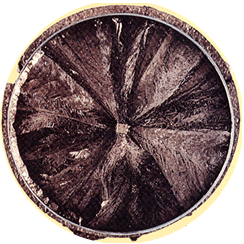| enginuity |
|
Superconductors
Now that many of the advantages of superconductors, such as nearly zero energy consumption, high current capacity and high speed of response, can be realised at liquid N2 temperatures, the race is on to develop processing technologies for the production of robust practical conductors with mechanical and superconducting specifications appropriate for engineering applications.
'Conventional superconductors are already widely used in certain applications such as MRI body scanners in hospitals, but the critical current density (Jc) in high critical temperature superconducting materials is still limited by the presence of weak links such as grain boundaries,' explains Dr Archie Campbell, one of the five co-directors of the Interdisciplinary Research Centre (IRC) in Cambridge.
There is now intense worldwide competition to produce highJc bulk materials. One of the most exciting applications of such material would utilise the levitating properties of high-temperature superconductors (HTS) in developing magnetic bearings for engines and levitating flywheels for energy storage. Low friction and the absence of a speed limitation are major advantages, but there are many other applications for these materials, which can trap fields of 4 Tesla.

Large-grain HTS grown by Dr David Cardwell's group using a seeding technique at the IRC, Cambridge.
Josephson Junctions
Josephson junctions are the most widely used superconducting electronic devices, and not only circuit elements such as logic gates, but complete microprocessors have been built using this technology. The only technique for making Josephson junctions with HTS outside the USA was developed in the Department and involves using a high-power electron microscope to produce the required weak link.
SQUIDS in
Other prototype models being developed at the IRC include superconducting solenoids, power cables and SQUIDS (Superconducting QUantum Interference Devices). SQUIDS can be made to be very sensitive detectors of magnetic fields which have useful applications in medicine (brain scanners), geology (ore detection) and navigation.
Further information from Dr Archie Campbell on (01223) 337446.
| number 3, summer '94 |